Melladerm® Plus, Bacteriostatic Wound Gel
For the treatment of superficial (contaminated) chronic, oncologic and/or acute wounds. Melladerm® Plus is designed specifically with the patients with necrotic or sloughy wounds. Melladerm® Plus offers a more gentle approach than pure honey that is known to cause pain when applied to the wound. It contains 45% honey, which is more than enough to have all the benefits of honey we need during wound healing. The honey based wound gel will cause less pain and utilizes the antibacterial strengths of honey (osomosis & low pH). The honey source of Melladerm® Plus is heavily controlled and is usually a multi flower honey. This is specially selected honey from a multiflower mountain region that is known as a free pesticide and pollution area. Melladerm® Plus can be 30 times diluted before it loses its antibacterial properties. (high osmolarity) Melladerm Plus provides a moist wound healing environment and creates an unfavorable environment for micro-organisms.
During its processing into a wound gel, the honey is not heated or irradiated because this is known to destroy the honey healing properties.The multi flower honey has a low pH and is cleared from specific contaminants with a by SanoMed Manufacturing bv patented method (ozonation).
Melladerm® Plus can be used to fill the wound space and then covered with gauze, tulle or Foam. The gel is easy to apply and will not adhere to the wound. Melladerm® Plus has more debriding capabilities and has unique healing properties. Melladerm® Plus comes also in plastic tubes of 20 or 50 gram.
Product Code
Description
Contents
Contents over box
MDP50
Melladerm Plus 50 gram
50 gram Tube
14 x 1 tube per karton
MPD20
Melladerm Plus 20 gram
20 gram Tube
70 tubes/ overbox
Case 1: A three year old boy burned himself at school when he was squeezed between a heating radiator and a cupboard. The child was stuck for several minutes before the teacher could free him. The results was two burn wounds on his buttock; On the right side a first degree to superficial second degree burn was present, but on his left side a deep second degree to even third degree burn was inflicted.
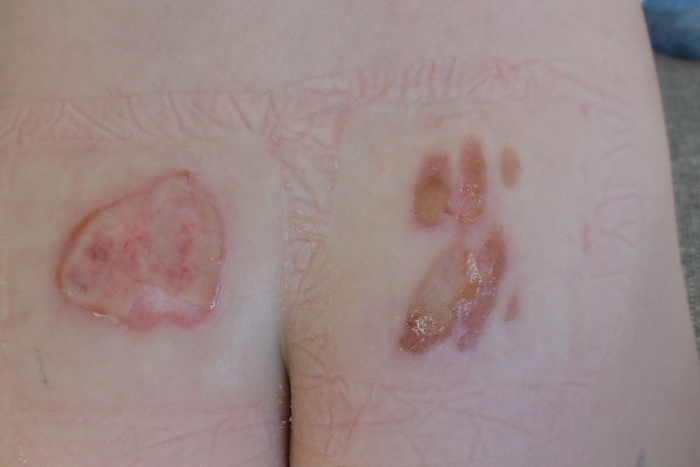
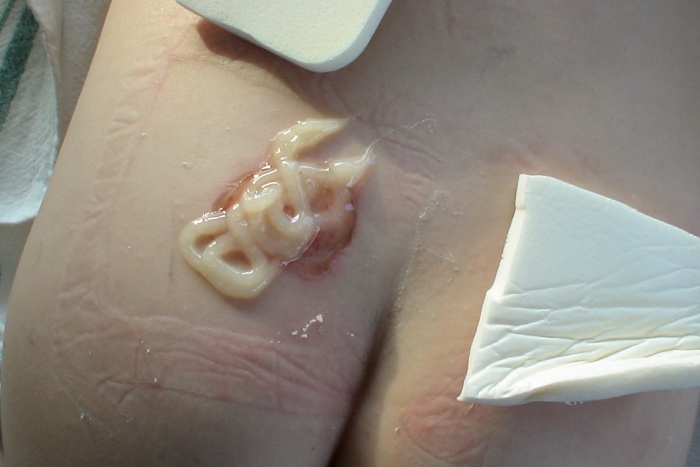
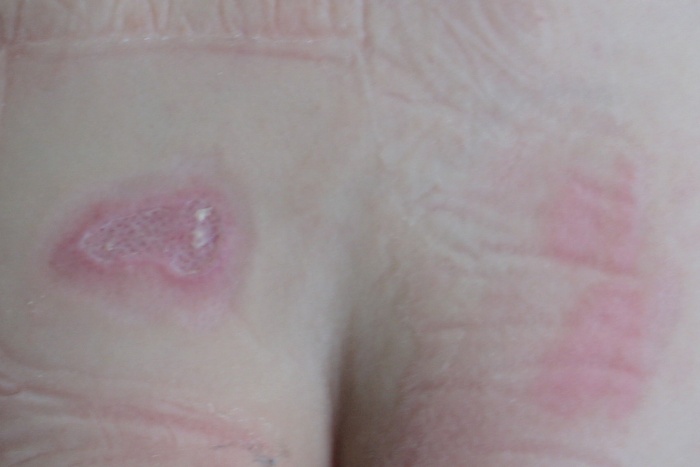
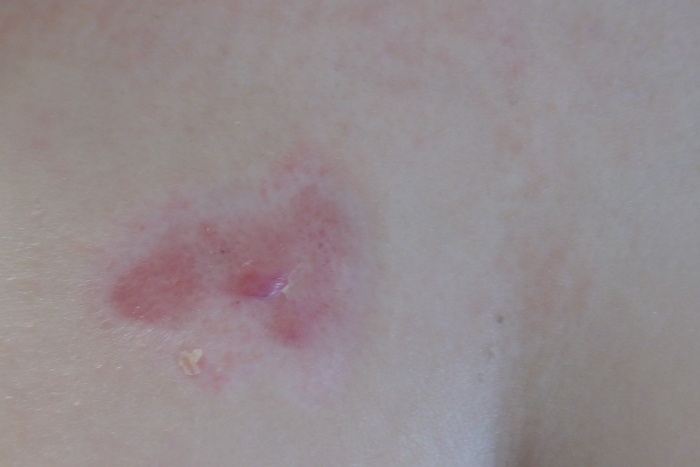
Case 2: Male Age 64 . Infected Venous ulcers both legs wounds treated with Melladerm Plus/tulle & SanoSkin Cleanser.
Melladerm plus and Melladerm plus tulle was used to soften and remove the fibrine tissue. Wound was cleansed with SanoSkin Cleanser and treatment continued with Melladerm plus till full healing was achieved.
It took 4 weeks to full healing.
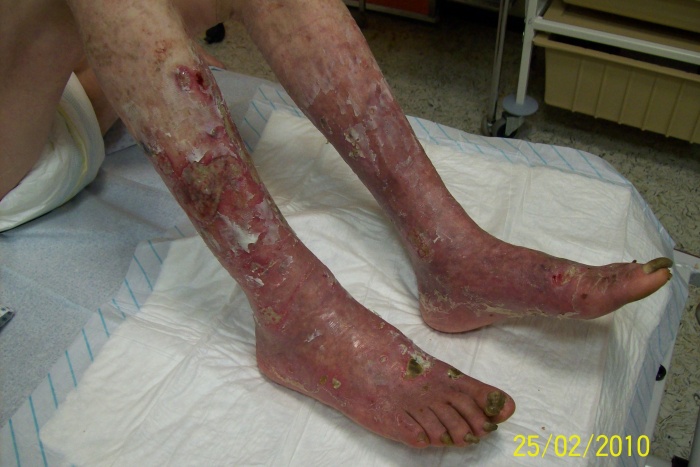
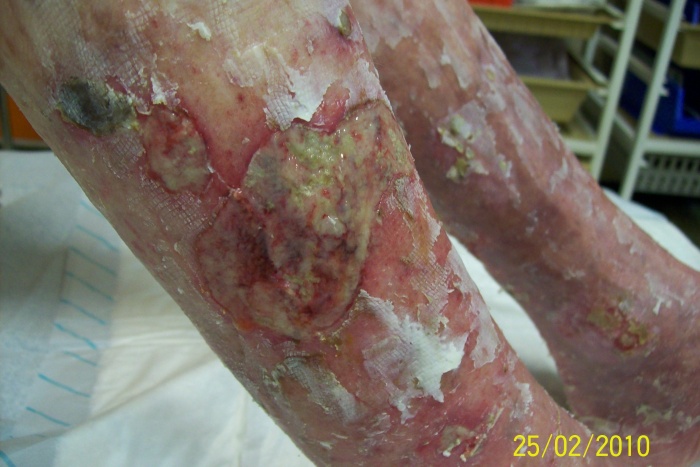
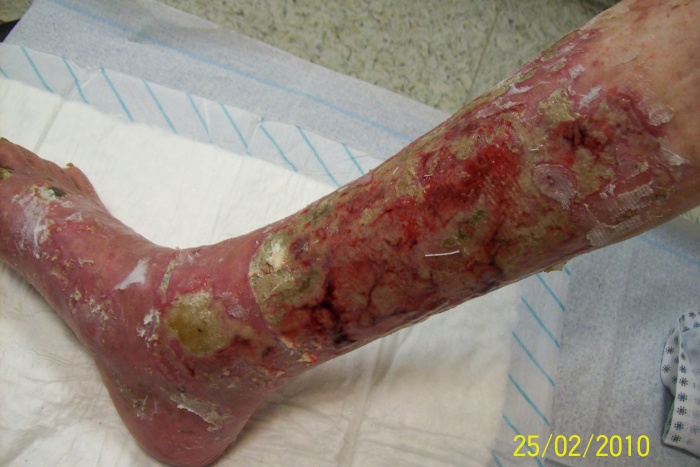
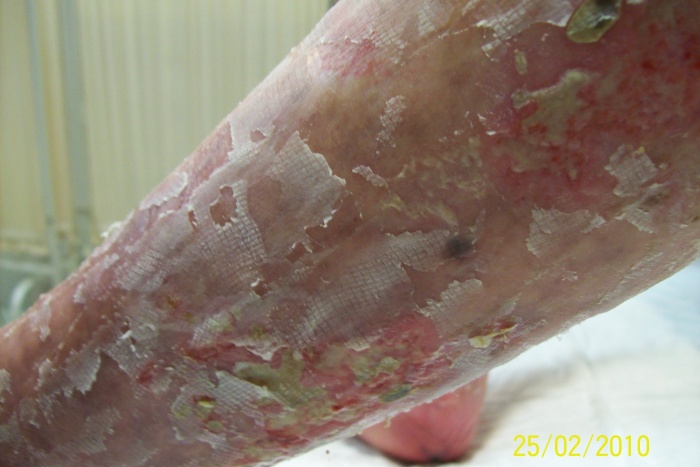
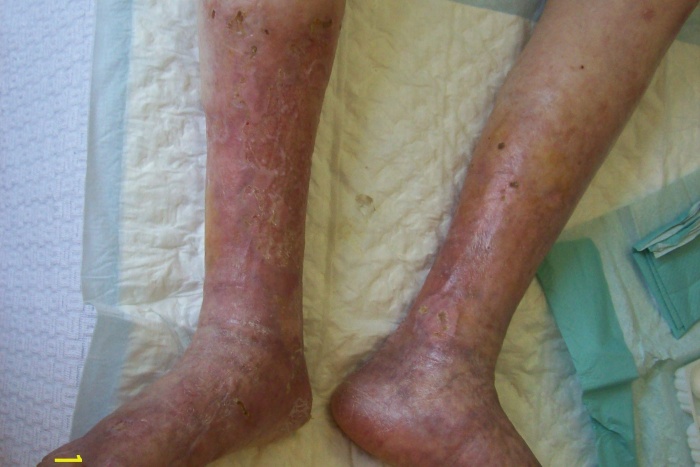
Case 3: The Wound (mixed venous/arterial ulcer) was treated with Melladerm® Plus and SanoSkin® Foam for 50 days. The patient did not report pain or discomfort during the treatment. The wound existed for over 3 years and the patient was in bad condition, still the wound healed. Melladerm® Plus was applied daily.
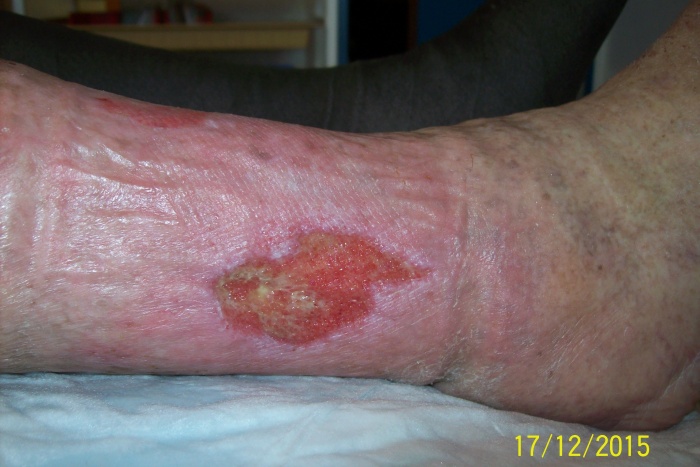
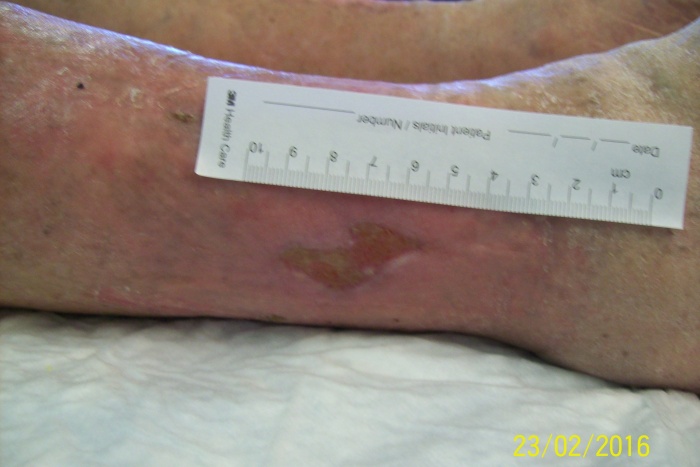
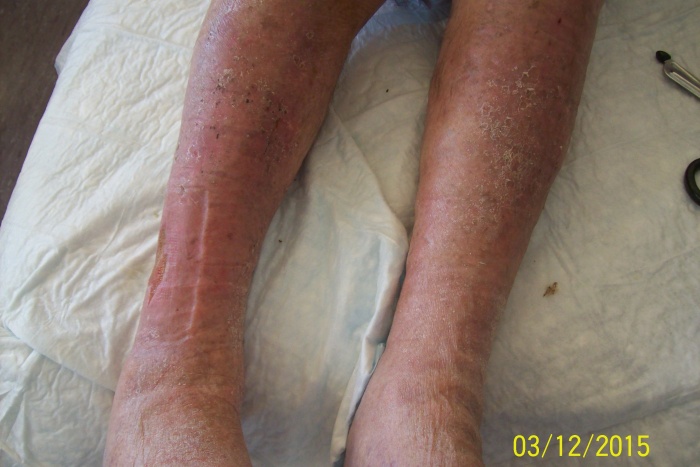
Antibacterial ? How long ? and what if diluted ?
Honey is claimed to be anti microbial by osmosis (high concentration on particles such as glucose and saccharose) and by producing Hydrogen peroxide (H2O2) when in contact with water. The latter is because some honeys do contain the enzyme glucose oxidase that converts glucose in glucon acid and H2O2. Hydrogen peroxide is a potent anti microbial agent that is effective in small quantities against most microorganisms. If honey is heated or irradiated the glucose oxidase will be destroyed.. To check if the glucose oxidase is active enough even when the Melladerm® Plus is diluted heavily we ordered a Zone of inhibition test in a certified independent laboratory.
Zone of Inhibition test
A zone of inhibition test was performed showing that Melladerm® Plus could be diluted 30 times before losing its antibacterial activity against Staphylococcus aureus. To execute the actual assay, we choose a LMG-reference culture, i.e. Staphylococcus aureus subsp. aureus Rosenbach 1884 AL. The test strain is cultivated in TBS (Triple Sugar Broth), incubated at 35°C for 24h. By means of pour-plate method the concentration of the overnight culture is determined (1x109 cfu/ml). A 1000 fold dilution of this overnight culture in sterile physiological water gives us a homogeneous suspension with a concentration of 1x106 cfu/ml. 1,0ml of this suspension is added to 100ml of an appropriate medium (Colombia-agar +5% sheep blood) and gives an end concentration of 1x104 cfu/ml. The inoculated medium is now ready to be poured in glass petri-dishes, 19cm of diameter, per 100ml. When the medium is solid, pierce 5 holes (˜ 13,8mm) on each plate. A serial dilution of the SanoSkin® Melladerm® Plus gel is prepared in sterile distilled water. A 20% (m/v%) stock solution of the gel is prepared in sterile distilled water. Starting from this solution, the following dilutions are made: 20% -19% - 18% - 2% - 1% m/v. From each dilution 200µl is transferred into the prepared wells in the plates. As mentioned before, 5 dilutions per plate.
Due to the Beta-haemolytic activity of the used strand of Staphylococcus aureus, it is rather easy to detect the inhibition zones (the darker, brownish circles around the pierced wells, see pictures aside.
Obviously we can conclude that SanoSkin® Melladerm® Plus inhibits the growth of Staphylococcus aureus when the concentration of the product is higher than 4% m/v.
This clearly demonstrates the effect of the hydrogen peroxide activity of the honey.
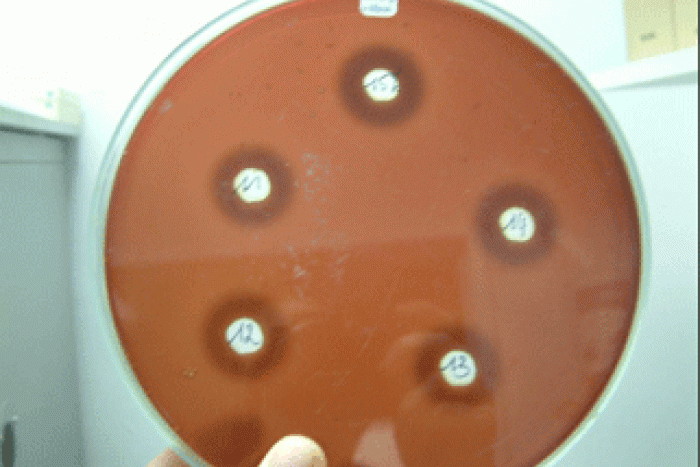
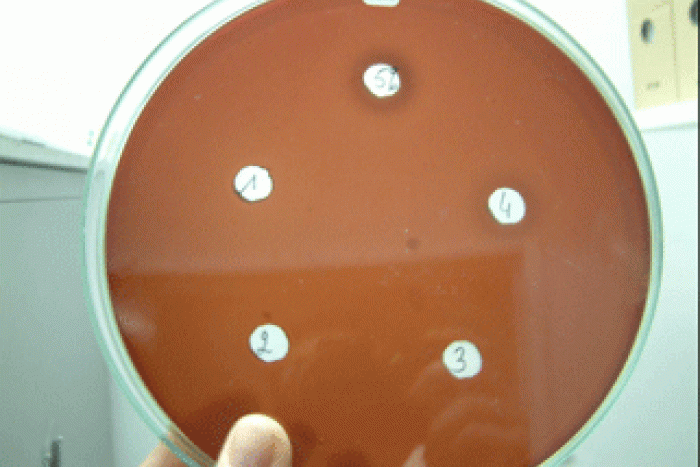
Questions / more info ?
More info soon
We're looking for SanoMed distributors. Contact us here.
Download our free brochure and discover all the products with accompanying information!






